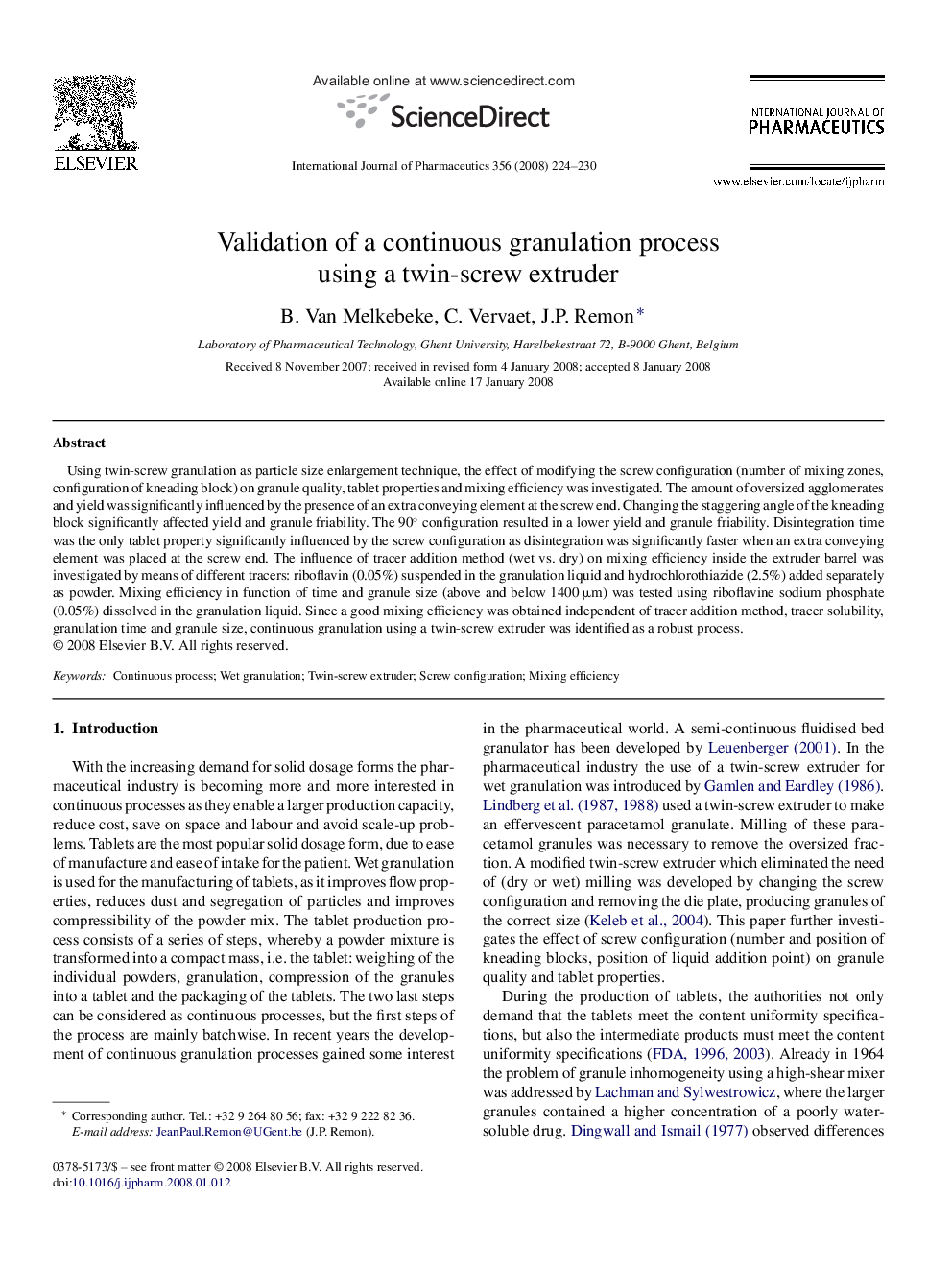| Article ID | Journal | Published Year | Pages | File Type |
|---|---|---|---|---|
| 2505452 | International Journal of Pharmaceutics | 2008 | 7 Pages |
Using twin-screw granulation as particle size enlargement technique, the effect of modifying the screw configuration (number of mixing zones, configuration of kneading block) on granule quality, tablet properties and mixing efficiency was investigated. The amount of oversized agglomerates and yield was significantly influenced by the presence of an extra conveying element at the screw end. Changing the staggering angle of the kneading block significantly affected yield and granule friability. The 90° configuration resulted in a lower yield and granule friability. Disintegration time was the only tablet property significantly influenced by the screw configuration as disintegration was significantly faster when an extra conveying element was placed at the screw end. The influence of tracer addition method (wet vs. dry) on mixing efficiency inside the extruder barrel was investigated by means of different tracers: riboflavin (0.05%) suspended in the granulation liquid and hydrochlorothiazide (2.5%) added separately as powder. Mixing efficiency in function of time and granule size (above and below 1400 μm) was tested using riboflavine sodium phosphate (0.05%) dissolved in the granulation liquid. Since a good mixing efficiency was obtained independent of tracer addition method, tracer solubility, granulation time and granule size, continuous granulation using a twin-screw extruder was identified as a robust process.
